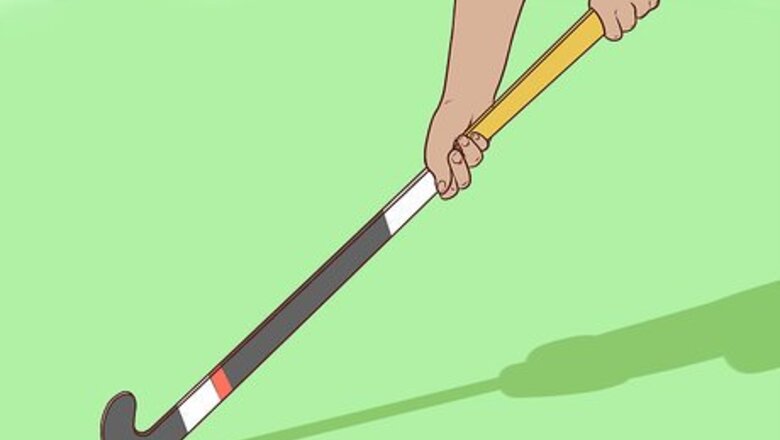
views
Positioning Your Body
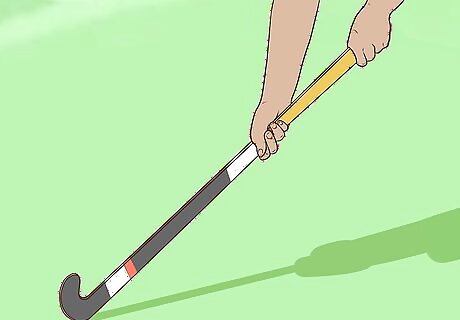
Use a basic grip with your dominant hand below your non-dominant one. Hold the stick as you would for a push, with your non-dominant hand at the top of the stick and your dominant hand at the bottom of the leather grip. Make sure that the places where your thumbs and index fingers meet on your hands are both pointed towards the toe edge of the stick. A “push” or “push pass” in field hockey is the basic form of passing, in which you use your stick to push the ball toward another player. The toe edge is the edge that leads into the curved part of the stick. The place where your thumb and index finger touch is referred to as the “V” in field hockey. If you push the stick out in front of you, you should be able to read a watch on your wrist. If you cannot, because your wrist is too rotated forward, then you need to move your wrist and hand position backwards on the stick to get the proper position.
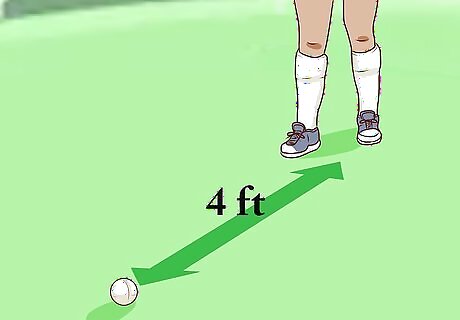
Stand about 4 feet (1.2 m) away from the ball. This is about equivalent to 1 stick length plus 1 step away from the ball. If you’re taking a penalty shot, you may be positioned a bit farther away from the ball. However, you should always be at least this far away to allow yourself enough time to step with force toward the ball.
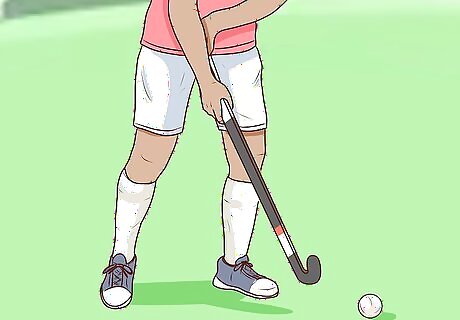
Position yourself so you’re facing away from your target. Plant your feet so that they face 90 degrees away from the goal or whatever target you want to flick toward. Make sure to put your non-dominant foot on the side of your body closest to the goal. For example, if you’re right-handed, face your body 90 degrees to the right of the goal, so that your left foot is closer to the goal than your right.Warning: In field hockey, any raised shot (i.e., a shot above knee height) that isn’t aimed at the goal and that is dangerous to another player will be penalized. Make sure you’re always flicking towards the goal to avoid a penalty.
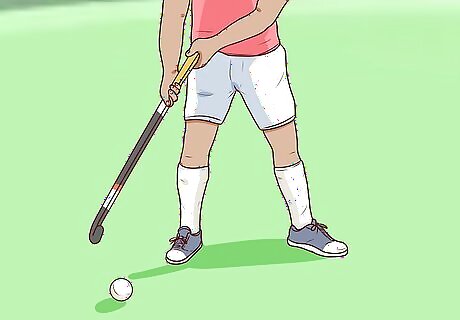
Shift your hips and upper body to face away from the goal. Turn your body slightly toward your dominant side so that your hips and upper body are facing even further away from the goal than your feet. This will give you the necessary torque and power to perform an effective flick.
Performing the Movement
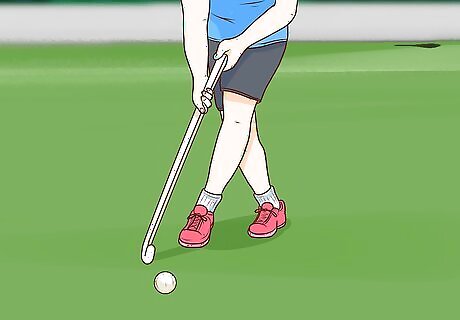
Step with your non-dominant foot, then bring your other foot forward. The first stride with your non-dominant foot should be a long step toward the ball. Then, cross your dominant foot behind your non-dominant foot as you bring it to within about 1 foot (0.30 m) of the ball. Your dominant foot should be about 1 foot (0.30 m) behind your non-dominant foot. If you’re not able to bring your right foot this close to the ball in 2 steps, do a slight hop toward the ball after you cross your right foot behind your left foot.Tip: You may need to take a big step to get enough power behind your shot. Use the strength in your legs as much as you can to make your flick a strong one.
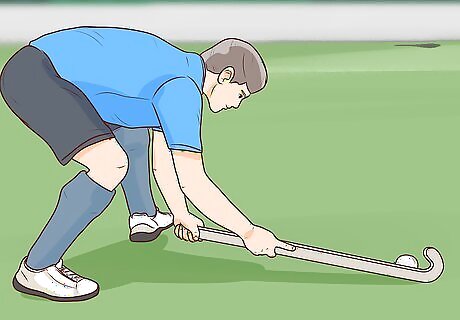
Lean your upper body down and bring your stick down to touch the ball. Do not hit the ball with your stick; just gently bring the 2 into contact with each other. Make sure to keep your back straight while leaning your torso down. Your upper body should be roughly parallel to the ground at the end of this step. Make sure you get really low so you can have more power behind your flick. Keep your body low throughout the entire swing. Be sure to keep your eye on the ball throughout this process.
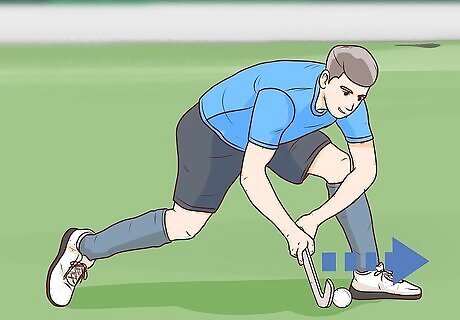
Roll the ball forward on your stick while shifting your weight forward. If you started this movement by putting your left leg forward, then begin to shift your body weight onto your left foot. Rolling the ball this way will cause it to move slightly up the shaft of the stick as you move your upper body closer to the ground. You may need to rotate the front face of your stick back a bit in order to get more elevation on your flick.Tip: As you become more proficient at flicking, aim to keep the ball on the stick for longer to flick it higher. You can also control the direction of the flick, opening up the stick face early to flick right, or twisting the stick to the left to throw the ball left.
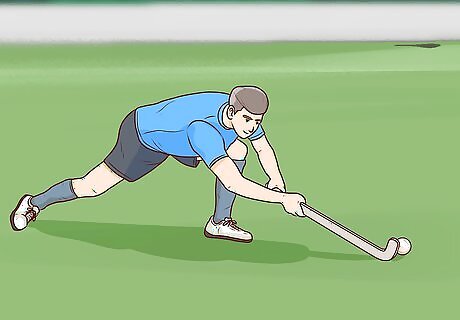
Sling the ball forward when your body is parallel to the ground. Push the ball in a straight line into the air and toward your target. Be sure to stay low throughout the entire swing to maximize the amount of force you’re putting on the ball. For a high shot, release the ball forward when the stick is slightly below your leading knee. For lower shots, sling the ball as soon as the stick is about as high as your ankle.
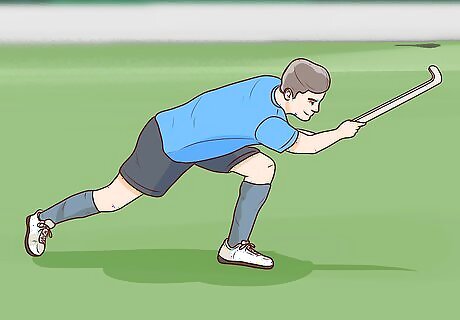
Follow through with your entire body when you sling the ball. Turn your hips and shoulders towards the goal as you bring the stick forward across your body. Smoothly wrap the stick around and below your front shoulder. All of your weight should be resting on your leading foot at the end of this movement. Watch where your stick swings! Keep your stick below shoulder height in the follow through to avoid hitting other players in the head and attracting a penalty.




















Comments
0 comment